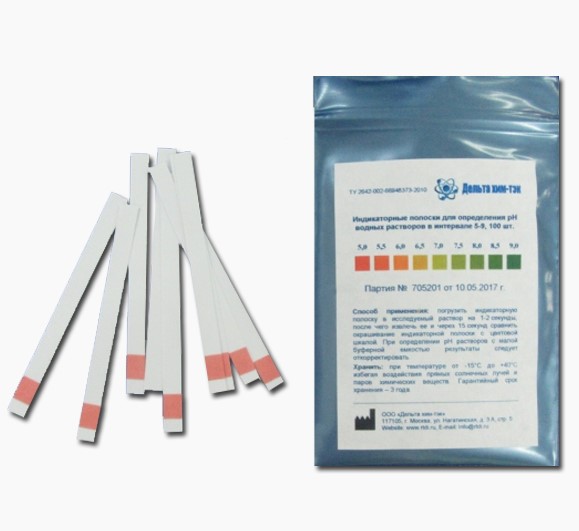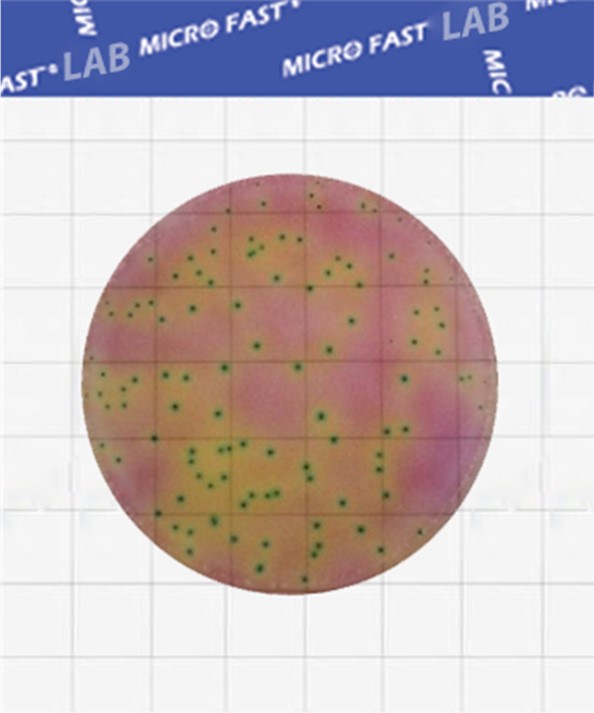- Antibiotics Tests in Milk
- Inhibitory detection test
- Laboratory equipment
- Centrifuges
- Indicator strips
- Autoclaves
- Scales
- Thermometers
- Packing
- PureTrust ATP monitoring
- ATP monitoring PIONEERPRODUKT CleanTrust
- MICROFAST® substrates
- Nutrient media
- Ice cream sticks
- Consumables
- Detergents and disinfectants
- Treatment agent
- Milk filters
- Wipes
- Gloves
- Sampling
Scientists have bred gene-edited chickens to fight bird flu
When ANP32A gene-edited chickens were exposed to a normal dose of the H9N2-UDL strain of avian influenza virus, commonly known as avian influenza , 9 out of 10 birds remained uninfected and no other chickens were infected.
The research team then exposed the gene-edited birds to an artificially high dose of avian influenza virus to further test their resistance.
When exposed to the high dose, half the group became infected—5 of the 10 birds. However, gene editing did provide some protection: the amount of virus in infected gene-edited chickens was much lower than the level typically seen during infection in chickens without gene editing.
Gene editing has also helped limit the further spread of the virus. There was no transmission of the virus to birds with edited genes.
The scientists found that in birds with the ANP32A gene edited, the virus had adapted to recruit two related proteins—ANP32B and ANP32E—to replicate.
After laboratory testing , the scientists found that some mutations allowed the virus to use the human version of ANP32, but its replication remained low in human airway cell cultures.
Experts say additional genetic changes will be required for the virus to become infected and spread effectively among people.
However, the results show that the team believes editing the ANP32A gene alone is not robust enough for use in chicken production.
To prevent the emergence of escape viruses—viruses that adapt to evade gene editing and cause infection—the research team then targeted additional sections of DNA responsible for producing all three proteins—ANP32A, ANP32B and ANP32E—within lab-grown chicken cells.
In laboratory cell cultures, virus growth was successfully blocked by three gene changes.
The next step is to try to breed chickens with changes in all three genes.
The study highlights the importance of responsible gene editing and the need to be attentive to the risks of viral evolution in undesirable directions unless full resistance is achieved, experts say.
Avian influenza is a serious global threat with devastating impacts on both farmed and wild bird populations. In the UK alone , the current outbreak of H5N1 bird flu has decimated seabird populations and cost the poultry industry more than £100 million in losses.
 Rapid tests for fluoroquinolone, erythromycin, lincomycin, tillosin and tilmycosin residues in milk, whey
Rapid tests for fluoroquinolone, erythromycin, lincomycin, tillosin and tilmycosin residues in milk, whey Express-tests PIONER 5 in1 for the determination of thiamphenicol, meloxicam, colistine, trimethoprim, sulfonamides
Express-tests PIONER 5 in1 for the determination of thiamphenicol, meloxicam, colistine, trimethoprim, sulfonamides TEST KIT for determination of inhibitory agents PIONEERPRODUKT® DASH-TEST, WC0040
TEST KIT for determination of inhibitory agents PIONEERPRODUKT® DASH-TEST, WC0040 Rapid tests for determining the residual amount of chloramphenicol in meat
Rapid tests for determining the residual amount of chloramphenicol in meat PIONEER MEIZHENG BIO-TECH (5 in1) JC1165 / Rapid tests for the determination of the residual amount of halofuginone, flavomycin, novobiocin, flunixin, dexamethasone / prednisolone in milk, whey
PIONEER MEIZHENG BIO-TECH (5 in1) JC1165 / Rapid tests for the determination of the residual amount of halofuginone, flavomycin, novobiocin, flunixin, dexamethasone / prednisolone in milk, whey Rapid 4 in 1 tests for determining the residual amount of neomycin, kanamycin, gentamicin, spectinomycin in milk, whey
Rapid 4 in 1 tests for determining the residual amount of neomycin, kanamycin, gentamicin, spectinomycin in milk, whey- Rapid tests PIONER 5 in 1 for the determination of sulfonamides, tylosin, tilmicosin, lincomycin, erythromycin, fluoroquinolones
- ANTIBIOTICS / ELISA TESTS
- Express tests for determining the residual amount of β-lactams, tetracyclines, chloramphenicol, streptomycins in milk, whey
- PIONEER MEIZHENG BIO-TECH (5 in1) JC0871/ Rapid tests for the determination of the residual amount of β-lactams, tetracyclines, chloramphenicol, streptomycins, ceftiofur in milk, whey.
 Indicator strips for the determination of neutralizing substances (soda and ammonia) in milk, 100 pcs.
Indicator strips for the determination of neutralizing substances (soda and ammonia) in milk, 100 pcs. Butyrometers for milk, cream, skim milk and buttermilk
Butyrometers for milk, cream, skim milk and buttermilk Indicator strips "Milk acidity" (to determine the pH of milk and dairy products), 100 pcs.
Indicator strips "Milk acidity" (to determine the pH of milk and dairy products), 100 pcs. VISCO Viscometer
VISCO Viscometer Filter element for OBM device with a diameter of 35mm (100pcs/pack)
Filter element for OBM device with a diameter of 35mm (100pcs/pack) Tagler TSLM 1-8 milk centrifuge (without heating) (Russia)
Tagler TSLM 1-8 milk centrifuge (without heating) (Russia)- Low rack to the island table BA-SL-STONE
- Electronic thermometer LT-300-H-TC
- LAC S Series Vertical Laboratory Autoclaves (South Korea)
- Laboratory thermostat-reductor LTR
- The device for the diagnosis of mastitis "MILTEK-1"
- Analyzer of somatic cells in milk "SOMATOS Mini"
- IKA PETTE vario single-channel laboratory pipettes with variable volume (Germany)
- Dry-air thermostats with cooling TSO ( SKTB, Smolensk)
- Stationary thermohygrometer IVA-6B2 (Russia)
 Paper for micro-ribbed
Paper for micro-ribbed Ice cream chopsticks
Ice cream chopsticks KH PACK® tartlet paper
KH PACK® tartlet paper Grease and barrier paper KH PACK®
Grease and barrier paper KH PACK® Korreks for confectionery
Korreks for confectionery Salad dressings
Salad dressings- Paper sacks
- Plastic packaging for cakes and pastries
- Skiving and Hemming Technology
- Cover
- Korreks for desserts
- KH PACK® Straight Packing Paper
- Cartons for milk and dairy products
- KH PACK® bag making paper
- Backed Foil
 Ice cream sticks Standard 114
Ice cream sticks Standard 114 J-Bottom technology
J-Bottom technology Ice cream sticks (round)
Ice cream sticks (round) Ice cream sticks Standard 93
Ice cream sticks Standard 93 GableTop aseptic packaging
GableTop aseptic packaging Pepsin whey pork
Pepsin whey pork- Ice cream sticks Magnum (curly)
- Wafer cup and cone
- Auxiliaries for sugar products
- Ice cream sticks (with logo)
- General purpose environment of SPC "Biocompass-S" (Uglich)
- Petri dish 90 mm
 Disposable nitrile gloves (packing 100 pieces)
Disposable nitrile gloves (packing 100 pieces) Electric Cattle Driver
Electric Cattle Driver Anti-catfish milking rings
Anti-catfish milking rings Mug for milking the first streams of milk, lengthwise
Mug for milking the first streams of milk, lengthwise Milk bottle
Milk bottle Non-returnable cup for udder treatment
Non-returnable cup for udder treatment- Veterinary Needles Reusable
- Napkin reusable for wiping the udder
- Cassettes for DCC somatic cell counter
- Apron and armlets
- Pencils for marking animals
- Acid detergent (20l / 24kg)
- Gas tailing cutter
- Pre-milking udder cleaner (20 l)
- Spatula for mastitis test (Shalm's test)
 MicroFast® Lactic Acid Bacteria Count Plate (Part Number LR1312)
MicroFast® Lactic Acid Bacteria Count Plate (Part Number LR1312) Substrate for determining the number of staphylococci (Catalog number LR1005) MicroFast® Staphyloccocus aureus Count Plate
Substrate for determining the number of staphylococci (Catalog number LR1005) MicroFast® Staphyloccocus aureus Count Plate MicroFast® Coliform & E.coli Count Plate
MicroFast® Coliform & E.coli Count Plate Yeast & Mold Count Plate (cat. no. LR1003) MicroFast® Yeast & Mold Count Plate
Yeast & Mold Count Plate (cat. no. LR1003) MicroFast® Yeast & Mold Count Plate MicroFast® Staphyloccocus aureus Confirmation Plate Staph.aureus Confirmation Plate (cat. no. LR1005Q)
MicroFast® Staphyloccocus aureus Confirmation Plate Staph.aureus Confirmation Plate (cat. no. LR1005Q) MicroFast® Bacillus cereus Count Plate (catalog number LR1010)
MicroFast® Bacillus cereus Count Plate (catalog number LR1010)- MicroFast® Environmental Listeria Count Plate
- MicroFast® Microbiological Substrates
- MicroFast® Salmonella Count Plate (SAL), for the determination of Salmonella in food and environmental samples (Catalog #LR1006)
- Substrate for determining QMAFAnM (catalog number LR1001)
- Substrate for accelerated determination of QMAFAnM, (catalog number LR1321)
- MicroFast® Enterobacteriaceae Count Plate (cat. no. LR1011)
- Coliform Count Plate (catalog number LR1002) MicroFast® Coliform Count Plate
 Ивановская область вошла в число крупнейших импортеров молочной продукции через БУТБ09.10.2025
Ивановская область вошла в число крупнейших импортеров молочной продукции через БУТБ09.10.2025 Беларусь и Казахстан готовятся к первому совместному аграрному форуму08.10.2025
Беларусь и Казахстан готовятся к первому совместному аграрному форуму08.10.2025 Российский депутат: радуемся, когда видим белорусские продукты на полках наших магазинов07.10.2025
Российский депутат: радуемся, когда видим белорусские продукты на полках наших магазинов07.10.2025- Каранкевич: важно направить все силы на выполнение дорожной карты сотрудничества Беларуси и Омана07.10.2025
- Казахстан изучит опыт Беларуси в области электронной биржевой торговли07.10.2025
- A set of scrambled eggs and a pancake, along with marigold kvass. What was served at the "Dazhinki" festival in Chashniki?05.10.2025
- БУТБ аккредитовала первую брокерскую компанию в Сербии04.10.2025
- What are local expectations for the new transport corridor visited by Lukashenko? The district head shared his thoughts.04.10.2025
- Мусор под окнами и антисанитария в квартире. Какая ответственность грозит за нарушение правил проживания 04.10.2025
- Первые в центральном регионе. Узнали, какой каравай зерновых собрали в этом сезоне в ОАО "Гастелловское" 03.10.2025
- Калининградская область заинтересована в обмене опытом с Беларусью в мелиорации и закупке техники01.10.2025
- Belarusian exports of dry milk products to Myanmar quadrupled in the first half of the year. 01.10.2025
- В ОАО "Агро-Колядичи" умеют получать завидные урожаи30.09.2025
- "Россь" не рассчитывает на авось30.09.2025
- Куда инвестирует бизнес? Узнали, какой город в Беларуси выбрал для вложений производитель протеиновых батончиков30.09.2025
- БУТБ обеспечит платформу для взаимодействия белорусского и индонезийского бизнеса28.09.2025
 Продажи сырных наггетсов в России увеличились более чем на 200%09.10.2025
Продажи сырных наггетсов в России увеличились более чем на 200%09.10.2025 С марта 2026 года в России заработает бесплатное цифровое окно для получения племенных свидетельств и разрешений на импорт животных09.10.2025
С марта 2026 года в России заработает бесплатное цифровое окно для получения племенных свидетельств и разрешений на импорт животных09.10.2025 Агрострахование в России: Новые тарифы и мнение экспертов09.10.2025
Агрострахование в России: Новые тарифы и мнение экспертов09.10.2025- Новая система очистных сооружений на птицефабрике «Сибагро» в Томске09.10.2025
- К Новому году говядина может подорожать на 5-10% из-за изменений в животноводстве09.10.2025
- Россия прогнозирует значительный рост экспорта мяса птицы в 2023 году09.10.2025
- Мужчина похитил более 17 кг мяса из закусочной в Иркутске09.10.2025
- В Госдуме раскритиковали фетву о доставке свинины и алкоголя09.10.2025
- В Европе предложили запретить слово «бургер» для блюда без мяса09.10.2025
- Новый случай заражения КРС мясной мухой в Мексике: подробности и последствия09.10.2025
- Устойчивое производство свинины в Германии: проект InnovationPork09.10.2025
- Экспорт яиц из Польши: Взлет на мировой арене к 2030 году09.10.2025
- Цены на куриные яйца в России упали до двухлетнего минимума08.10.2025
- Ужесточение ответственности за перевозку скота без ветеринарных документов в России08.10.2025
- Успех продуктов бренда «Ближние Горки» на фестивале местных производителей в Твери08.10.2025
- Россельхознадзор аннулировал 189 деклараций на продукцию животноводства в Урале08.10.2025
 10 reasons to take a deposit04.05.2025
10 reasons to take a deposit04.05.2025 EUоbserver узнал, что Венгрия перестала защищать импорт российского газа09.10.2025
EUоbserver узнал, что Венгрия перестала защищать импорт российского газа09.10.2025 Европарламент поддержал запрет называть еду без мяса бургером и стейком09.10.2025
Европарламент поддержал запрет называть еду без мяса бургером и стейком09.10.2025- EUоbserver узнал о возможной отсрочке санкций из-за трех стран09.10.2025
- RBI попросил снять санкции с Rasperia для разблокировки акций Strabag09.10.2025
- Nova Ekonomija узнала, что сербская NIS снова избежала санкций США09.10.2025
- FT узнала о «пристальном внимании» к NIQ из-за работы в новых регионах08.10.2025
- EUоbserver узнал о возможной отсрочке санкций из-за Венгрии и Словакии08.10.2025
- ЕС предложил ввести санкции против трех компаний из-за «фальшивых флагов»08.10.2025
- Вучич исключил национализацию нефтекомпании NIS ради отсрочки санкций США07.10.2025
- Самолет попавшего под санкции США российского перевозчика побывал в ЮАР07.10.2025
- Кремль пообещал ответить на ограничения поездок дипломатов по Евросоюзу07.10.2025
- Zelensky imposed new sanctions against Russia05.10.2025
- Губернатор назвал меры по борьбе с топливным кризисом в Хабаровском крае02.10.2025
- Bloomberg узнал о плане G7 значительно ужесточить санкции против России02.10.2025
- G7 заявила о проработке использования всей суммы российских активов02.10.2025
 В Британии предупредили о риске для миллионов из-за супербактерий06.01.2025
В Британии предупредили о риске для миллионов из-за супербактерий06.01.2025 Moscow court sides with Indian company in dispute with Health Ministry26.11.2024
Moscow court sides with Indian company in dispute with Health Ministry26.11.2024 Scientists estimate increase in mortality due to drug-resistant bacteria29.10.2024
Scientists estimate increase in mortality due to drug-resistant bacteria29.10.2024- Antibiotics for livestock and pesticides found in poisoned family's home29.10.2024
- Izvestia reported on the shortage of widely used antibiotics in Russia29.10.2024
- The Ministry of Health called data on the shortage of antibiotics unreliable29.10.2024
- Scientists warn of threat of return to pre-penicillin times29.10.2024
- The Ministry of Health explained how attitudes towards antibiotics changed during the pandemic07.05.2024
- WHO explains the risks of taking antibiotics "just in case"06.05.2024
- Doctors warn of bad practices after government decision on antibiotics25.04.2024
- The Ministry of Health removed antibiotics and hormones from the standard treatment of ARVI25.04.2024
- Antibiotics in oil: myth or reality?06.03.2024
- Antibiotics in sour cream: myth or reality?05.03.2024
- Antibiotics in goat milk: effects, problems and control measures16.02.2024
- The Japanese will stop producing the popular antibiotic vilprafen in Russia23.12.2023
- Antibiotics in Milk21.12.2023
 Antibiotics in pollock25.02.2024
Antibiotics in pollock25.02.2024 Antibiotics in herring: myth or reality?12.02.2024
Antibiotics in herring: myth or reality?12.02.2024 Antibiotics in perch10.02.2024
Antibiotics in perch10.02.2024- Antibiotics in sprat: facts and myths10.02.2024
- Antibiotics in tuna: an important health and environmental issue09.02.2024
- Antibiotics in meat30.01.2024
- Antibiotics in chebureks: myth or reality?29.01.2024
- Antibiotics in cutlets: problem or myth?18.01.2024
- Antibiotics in Chicken: Where Are the Highest Concentrations?17.01.2024
- Antibiotics in carp17.01.2024
- Where Are More Antibiotics in Chicken: Reality and Cautions16.01.2024
- Antibiotics in Salmon: Safety and Product Quality16.01.2024
- Antibiotics in Turkey15.01.2024
- Antibiotics in Sal: Reality and Safety Issues15.01.2024
- Antibiotics in Fried Dumplings: Facts, Risks and How to Stay Safe15.01.2024
- Antibiotics in sausages14.01.2024
 Antibiotics in Coffee: Myths and Reality03.05.2025
Antibiotics in Coffee: Myths and Reality03.05.2025 Forged forks: 10 interesting facts16.05.2024
Forged forks: 10 interesting facts16.05.2024 Swimming pool and weight loss: 10 interesting facts10.03.2024
Swimming pool and weight loss: 10 interesting facts10.03.2024- Tests for antibiotics in milk - 10 interesting facts07.03.2024
- Cleaning the kettle from scale, 10 interesting facts...06.03.2024
- Antibiotics in beer: 10 interesting facts04.03.2024
- Wild boar, how to survive...01.03.2024
- Purulent mastitis, 10 interesting facts27.02.2024
- Lemon and alcohol: 10 interesting facts25.02.2024
- Mint - 10 interesting facts25.02.2024
- Wild boar, 10 interesting facts20.02.2024
- Wild boar and domestic pig: comparison and advantages20.02.2024
- Cottage cheese, 10 interesting facts20.02.2024
- 10 Interesting Facts About Milk19.02.2024
- How to Clean a Toilet - 10 Interesting Facts (Acid vs Alkaline)18.02.2024
- Goat's milk: 10 interesting facts16.02.2024
 Dicroceliosis in cattle09.03.2024
Dicroceliosis in cattle09.03.2024 Demodicosis in cattle01.03.2024
Demodicosis in cattle01.03.2024 Purulent mastitis of cattle27.02.2024
Purulent mastitis of cattle27.02.2024- Hypodermatosis in cattle20.02.2024
- Hemonchoz in cattle11.02.2024
- Bursitis in cattle30.01.2024
- Brucellosis in cattle29.01.2024
- Bronchopneumonia in calves27.01.2024
- Bronchitis in cattle26.01.2024
- Mortellaro disease in cattle24.01.2024
- White muscle disease in cattle23.01.2024
- Babesiosis in cattle22.01.2024
- Cattle acidosis20.01.2024
- Arthritis in cattle20.01.2024
- Anaplasmosis in cattle18.01.2024
 Antibiotics for coughs: when they are needed and when they are not11.02.2024
Antibiotics for coughs: when they are needed and when they are not11.02.2024 Житель Пинского района подавился куском сырого мяса и умер08.10.2025
Житель Пинского района подавился куском сырого мяса и умер08.10.2025 В Молодечненском районе правоохранители пресекли работу мини-предприятия по производству крепких напитков08.10.2025
В Молодечненском районе правоохранители пресекли работу мини-предприятия по производству крепких напитков08.10.2025- В Минске нетрезвый мужчина ударил подростка и угрожал прохожему ножом08.10.2025
- Ведущий элемент здорового образа жизни. О важности правильного питания напомнила эксперт08.10.2025
- Не как в кино: сколько весят сумки инкассаторов и что они находят в банкоматах?08.10.2025
- В Витебской области выявили 59 нарушений у водителей средств персональной мобильности08.10.2025
- A drunk driver fled the scene of a fatal accident in Minsk. The Investigative Committee has released details of the case.07.10.2025
- Эта болезнь у каждого 30-го человека в мире. Эксперт рассказала, как уберечься от псориаза07.10.2025
- Меняли сроки годности, подделывали этикетки. В Испании торговые сети перепродавали просрочку 07.10.2025
- Belarusian customs officials commented on the situation involving a drunk truck driver at the Lithuanian border.05.10.2025
- В Могилеве проверили семьи, находящиеся в зоне социального риска 04.10.2025
- Либерализация и профилактика. Как изменятся кодексы по вопросам об административной ответственности? 04.10.2025
- Ответственность для бесправников планируют дифференцировать в зависимости от их категории03.10.2025
- О самых распространенных причинах пожаров рассказали в МЧС03.10.2025
- Из-за пьяного бесправника погибли два человека. Следователи раскрыли подробности ДТП в Браславском районе02.10.2025
Persons
Our Partners
Top 10
Our Test - Pioneer Tests
- Express tests for determining the residual amount of β-lactams, tetracyclines, chloramphenicol, streptomycins in milk, whey
- TEST KIT for determination of inhibitory agents PIONEERPRODUKT® DASH-TEST, WC0040
- PIONEER MEIZHENG BIO-TECH (5 in1) JC0586 - Antibiotic tests 5 in 1 / Rapid tests for determining the residual amount of β-lactams, tetracyclines and cephalexin in milk, whey
- PIONEER MEIZHENG BIO-TECH (5 in1) JC0871/ Rapid tests for the determination of the residual amount of β-lactams, tetracyclines, chloramphenicol, streptomycins, ceftiofur in milk, whey.
- PIONEER MEIZHENG BIO-TECH (5 in1) JC1165 / Rapid tests for the determination of the residual amount of halofuginone, flavomycin, novobiocin, flunixin, dexamethasone / prednisolone in milk, whey
